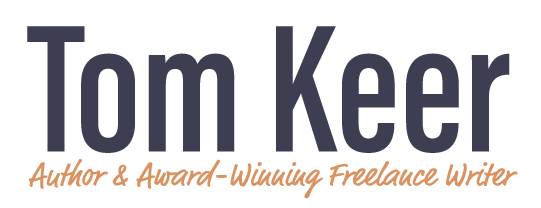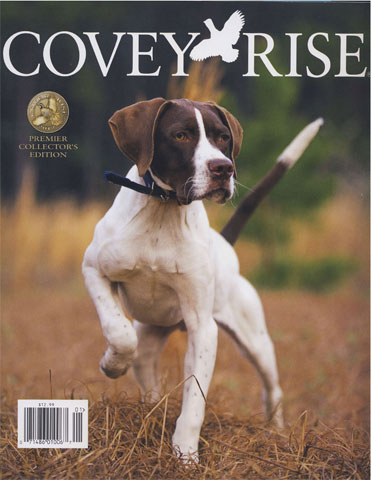Follow a famed hunter from the past’s footsteps through New Brunswick’s backcountry.
The fall is an extraordinary time of year to be in New Brunswick. In September and October, Atlantic salmon return to the storied rivers to spawn, big game animals are on the move, and bird hunters roam the upland and lowland coverts that are splashed with remarkable color. The white birch, alders, and maples turn brilliant shades of yellow, orange and red, and if we quiet our minds, autumn affords us an opportunity to see life the way an artist sees it every day.
I have travelled to the Mirimichi River Valley every year for a very long time. I’m not sure what originally prompted me to go. Maybe it was the shortness of my stateside woodcock seasons, maybe it was the loss of good, local habitat, or maybe it was to get my setters more work. Once thing is for sure, and that is once I started going to New Brunswick I’ve never stopped.
Logging is a main industry up here so an adequate supply of primary and secondary growth is always right around the corner. These are places where I can run my dogs for hours on end through an endless mix of alder runs, white birch and poplar stands, and old orchards fringed with Hawthorns, raspberries, and high-bush cranberries. Sometimes the ‘cock are mixed in with ruffed grouse, but for the most part I’ll find the timber-doodles in the dark, dampness of river bottoms and seeps. The grouse are in the uplands where they should be.
An aged smell accompanies the lowlands and it is caused by the moisture and the near eternity of decaying leaves. It’s a damp and musty smell that any veteran woodcock hunter recognizes immediately as home. The leaves and moisture create a fertile soil rich in the woodcock’s favorite meal of earthworms.
There is something entirely unusual about a bird with an upside-down brain that migrates best on a Full Moon and a WNW wind. One day the coverts are chock-a-block while other days they closely resemble Old Mother Hubbard’s cupboard. When I go through them and find no birds I look for their calling cards. Sometimes there are bore holes in soft terrain which show where they extracted a number of meaty earthworms while other times they leave behind traces of pre-flight excrement that woodcock hunter’s call chalk. If a flight of birds dropped in over night and the pointing and shooting is fast and furious I smile. But I also smile when I come out of a covert and bore witness only to sign. In those instances I tell my dogs that we’ll find birds in the next few coverts. I haven’t lied to them yet.
I stay in an old log cabin that was assembled from logs cut just a few miles away. Over the years the wood has dried in the summer sun, and the winter snow and spring rains have caused the foundation to settle quite a bit. Most of the angles aren’t as true as they used to be, and there is a porch that overlooks the river. A stack of firewood for the wood stove is in the living room and it’ll take off the morning and evening chill in no time. The cabin is owned by Debbie and Dale Norton and is a part of their Upper Oxbow camp. Debbie is from a lineage of guides five-generations long. It’s absolutely perfect.
Sometimes Cabe Loring, my Spartanburg friend, comes up for a change of pace from all of the dove and quail he chases in South Carolina. We’ll hunt with an outstanding New Brunswick guide named Brett Silliker. Brett has birds and salmon in his blood from a number of generations, and he is a passionate Brittney man. We bomb around in his Suburban and rumble down dirt logging roads, we roll past old pines, and tuck into out-of-sight spaces in the coverts, just like our favorite birds do.
A while back I learned that other New Englanders headed to New Brunswick long before I did. In fact, a Providence, Rhode Island hunter named Edmund Davis began heading to New Brunswick in the fall during the Edwardian Period. Most hunters were reveling in Teddy Roosevelt’s big game exploits, but Davis was different; he headed to Canada to bird hunt. Because he was notoriously well-heeled he rode the expanding railroad circuit that connected places like Manhattan, New Haven, Providence, and Boston with Fredericton, St. John, and Moncton. He spent every fall hunting birds and even died in camp: a single gunshot wound to the back of his head inflicted by his own shotgun in his cabin living room. Ruled a hunting accident by authorities. Go figure, there’s obviously more to the story than hunting.
Hunting woodcock has always had a cult-like following, and Davis went so far as to write a book about it. Published in 1908, Woodcock Shooting chronicled his annual Fall excursions to hunt ‘cock. If I could find an original I’d expect to pay the same amount as a 20-gauge Parker VHE in good condition. Is it worth it? Heck yeah.
Pictures show him emerging from coverts wearing high-laced boots and breeches, and a tweed jacket. He is said to have been the first man to hunt woodcock in New Brunswick with an English setter which made him far more deadly than dogless hunters. He favored a light shotgun, preferably weighing in at about six pounds. After a few years of learning, Davis switched to a 20-bore while a gunning companion favored the 28. They were well ahead of their time in a lot of ways. Imagine that; using a setter to hunt birds. What will they think of next?
The more things change the more they stay the same, and while I may think I am unique in my hunting approach I am not. Like many woodcock hunters I follow in the shadows of Edmund Davis. I tighten the laces of my knee-high L.L. Bean boots that are ideal for walking through mucky river bottoms and feeder streams. In the early season I’ll shoot a 20-bore and when the leaves fall I’ll switch to a 28. I have three English setters and my Parkers weigh in a bit more than 6 pounds. The difference is that instead of a train I’ll load up my perfectly broken-in 4Runner with 204,000 miles on it. I may have fewer zeros following the commas in my bank account, but I feel just as rich in my New Brunswick experience.
I wonder if Debbie Norton or Brett Silliker’s great-grandparents might have taken Edmund Davis for a turn in the woods? I’ll have to ask them when I go next year. It’ll just be a matter of time and I’m already counting down the days.
This article originally appeared in the Premier Collector’s Edition of Covey Rise magazine in the Fall of 2012.

